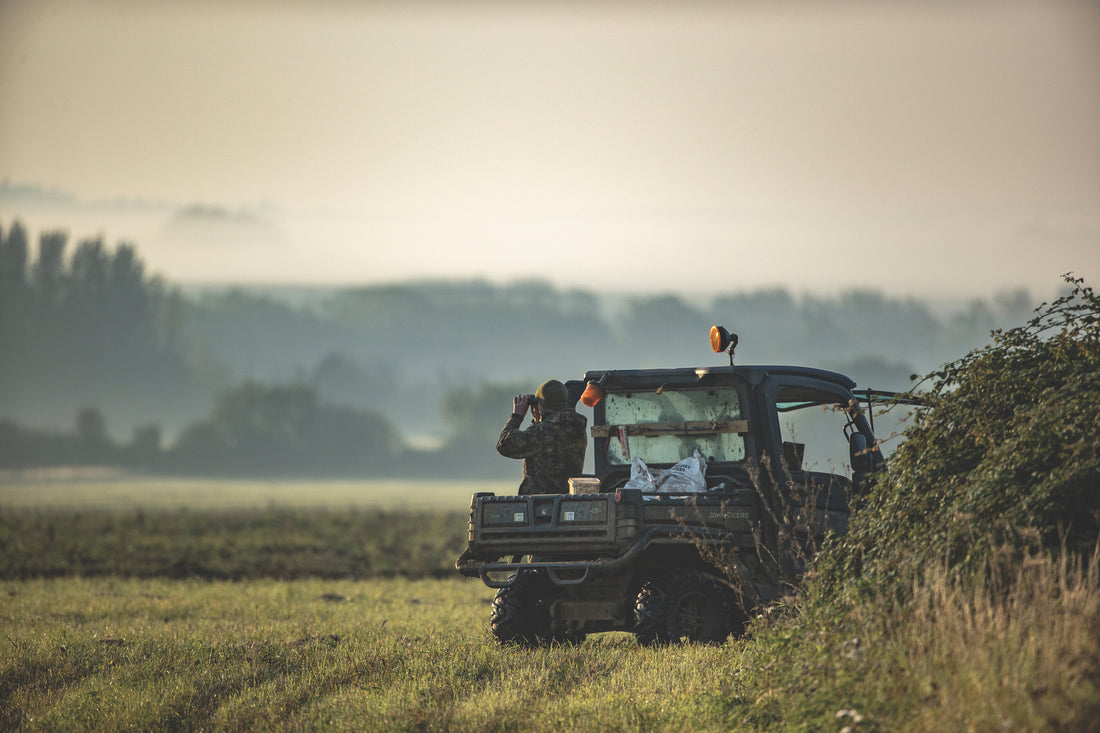“It’s nice being introduced as a Purdey Gold Award winner, I’m still proud,” says George Ponsonby, when we meet to talk about his success as last year’s winner. “We entered because we wanted to be recognised as doing our own bit for wildlife and conservation. And, we thought it would be a fun challenge to be up against the best in the country.”
Ponsonby preceded this year’s winner, Stewart McIntyre’s Hainey Farm Shoot in Cambridgeshire, thanks to his brilliant work with grey partridges on his farm in Gloucestershire. Though he cites “an enormous amount of luck” as playing its part in the win, the steadily rising partridge numbers and thriving habitat he and his team have tended to speak volumes. “It’s hard to put your finger on it, but there’s something uniquely special about grey partridges, compared to a pheasant shoot, or dare I say it, even a grouse moor,” he notes. “There’s something beyond everyone’s reach, it’s so difficult to get right and to succeed, so very few people are doing it. It’s hard work, and requires huge attention to detail — you have to be prepared to take the rough with the smooth. We do it because we love it.”

So, what should we expect from a shoot at Ponsonby Farms? “Currently we shoot partridges at least once, sometimes twice a year. Our spring pair count has been hovering between 110 and 135 for a few years, but as we continue to fine-tune the habitat, we might eventually have a spring count of 150 pairs, which could mean three days of shooting greys — that’s our aim.”
“Pheasants we shoot between three and five times, depending on the season. The exciting bit is that it’s very unpredictable; I don’t know if we’re going to shoot 30 or 130. I get as much pleasure from seeing the birds fly the wrong way as flying the right way, because if they fly the wrong way then they’ve outwitted me, and I like that,” Ponsonby smiles. “If the pheasants were reared and then released, they wouldn’t do that, they’re much more predictable. But wild pheasants have legs like coiled springs, they fly much faster, much higher, they curl, they swoop, they soar, they duck and they dive — it’s spectacular to watch. I know I have a gun, and they don’t, but nevertheless it feels like we’re pitting our wits against them. And, quite often, they beat us — it’s a refreshing challenge.”
For Ponsonby, conservation and shooting go hand in hand, and seeing the flora and fauna thrive is motivation in itself. “Good ideas evolve over time. The initial driver was so that we could have a bit of sport, but then we realised that what we were doing was benefitting much more than just our partridge numbers. I get an enormous thrill seeing bumblebee numbers recovering, or noticing an unusual butterfly. The farmland birds also benefit: skylarks, corn buntings, yellowhammers, linnets, goldfinches… Those numbers have gone through the roof. Hares, which are in decline everywhere, we’ve got hundreds of them! I think there’s not a single person who wouldn’t be pleased to see that sort of result.”

“The business of insects is more crucial than I realised, our ecosystem depends on them,” he continues. “If we don’t do something to revive our insect numbers very quickly, we are going to be kicking ourselves in 20 years time. We created beetle banks, which are fascinating. A beetle bank is essentially some grassy habitat down the middle of a large field, usually with strips of wild flowers along both sides to provide both nesting cover and a plentiful source of insects for the young chicks. It really hit home to me when I was walking around the farm one evening and saw 20 or 30 swallows flying up and down a beetle bank, because they’d worked out that there was an abundance of insects. That’s nature at work — when you give nature a chance, she seizes it with both hands.”
“That, for me, is the whole point,” Ponsonby concludes. “All of the habitat we put in is government funded, because it helps these species — not, so that I can shoot, that’s a bonus. The pleasure and the reward actually comes from the thriving environment. Sometimes, on a cold day, you can walk around a corner and suddenly the most enormous flock of linnets will lift out of a crop of kale. That’s the joy of it.”
Photos taken from Tarquin Millington-Drake’s upcoming book (available through Purdey & Sons) ‘Living with Greys’ to be published 9th May 2024.
Applications for The Purdey Awards 2024 are now open here.